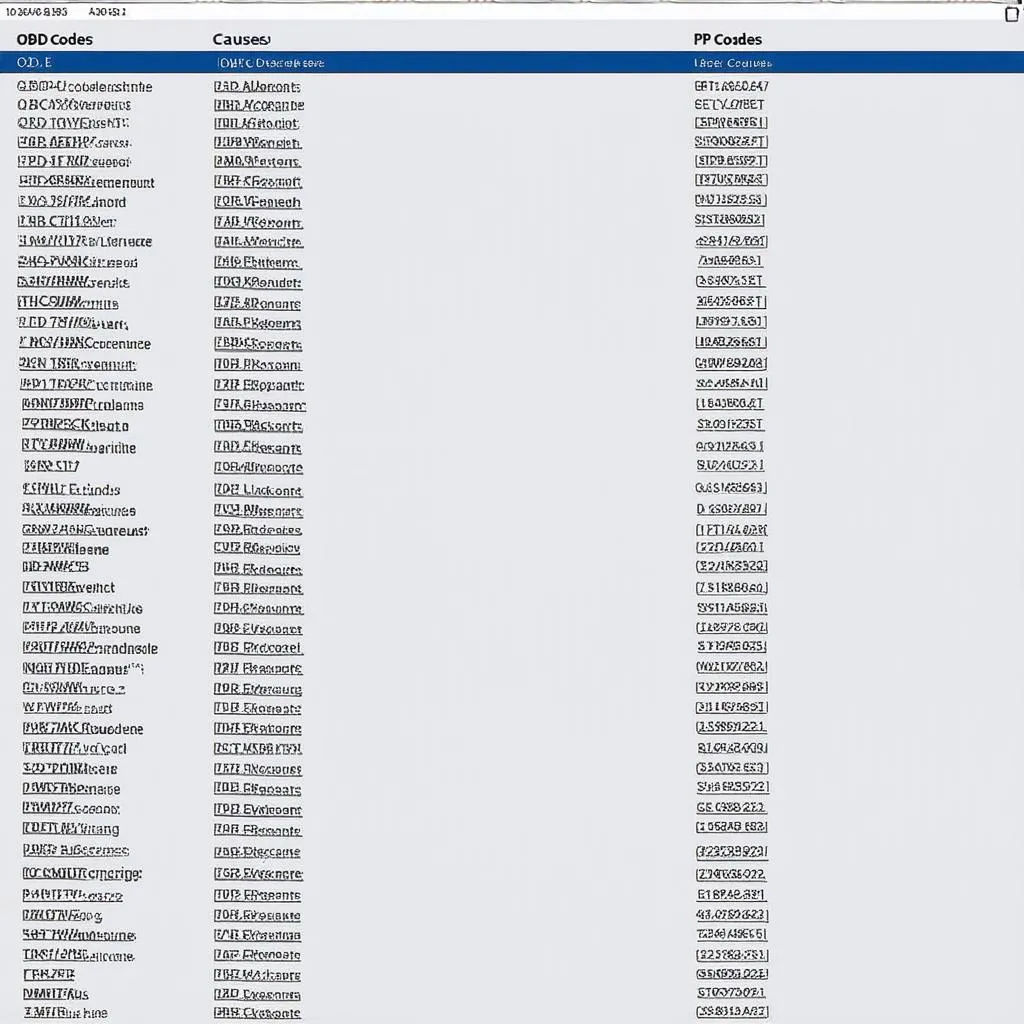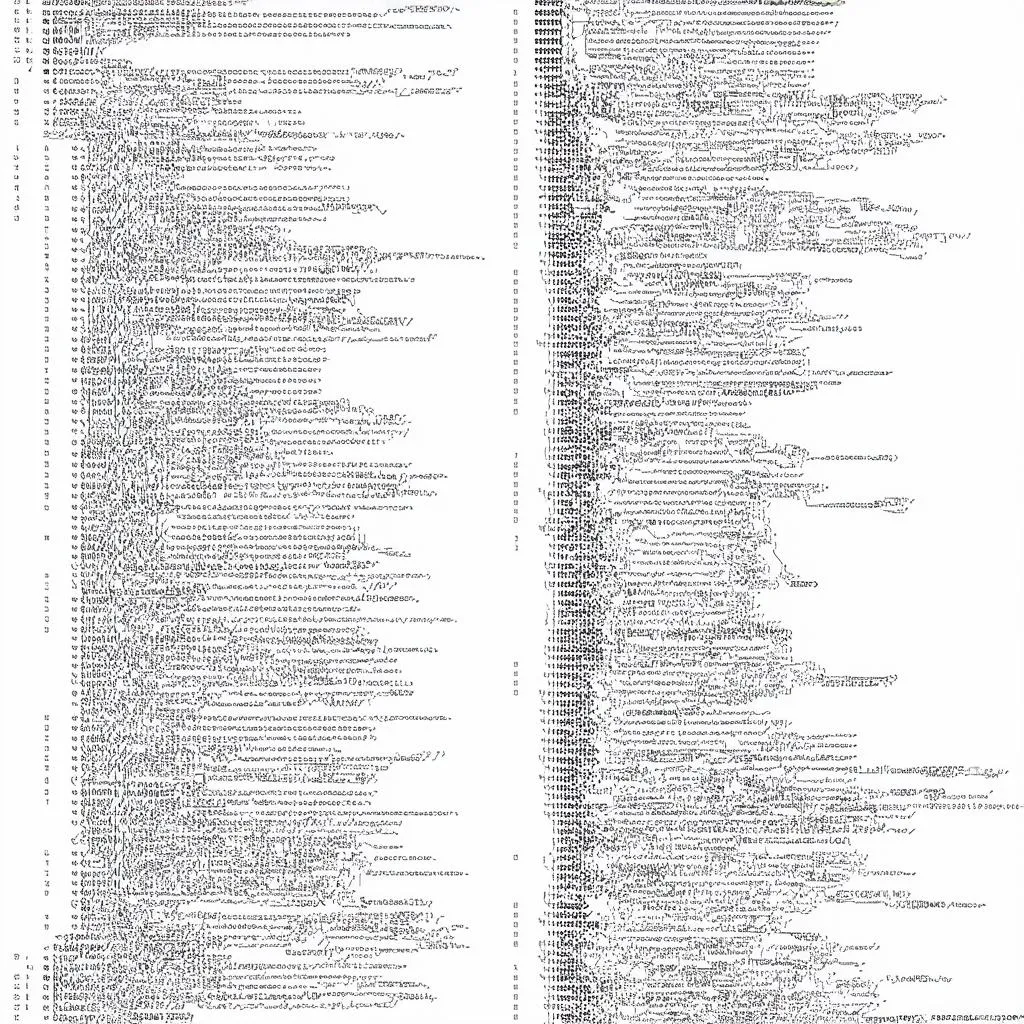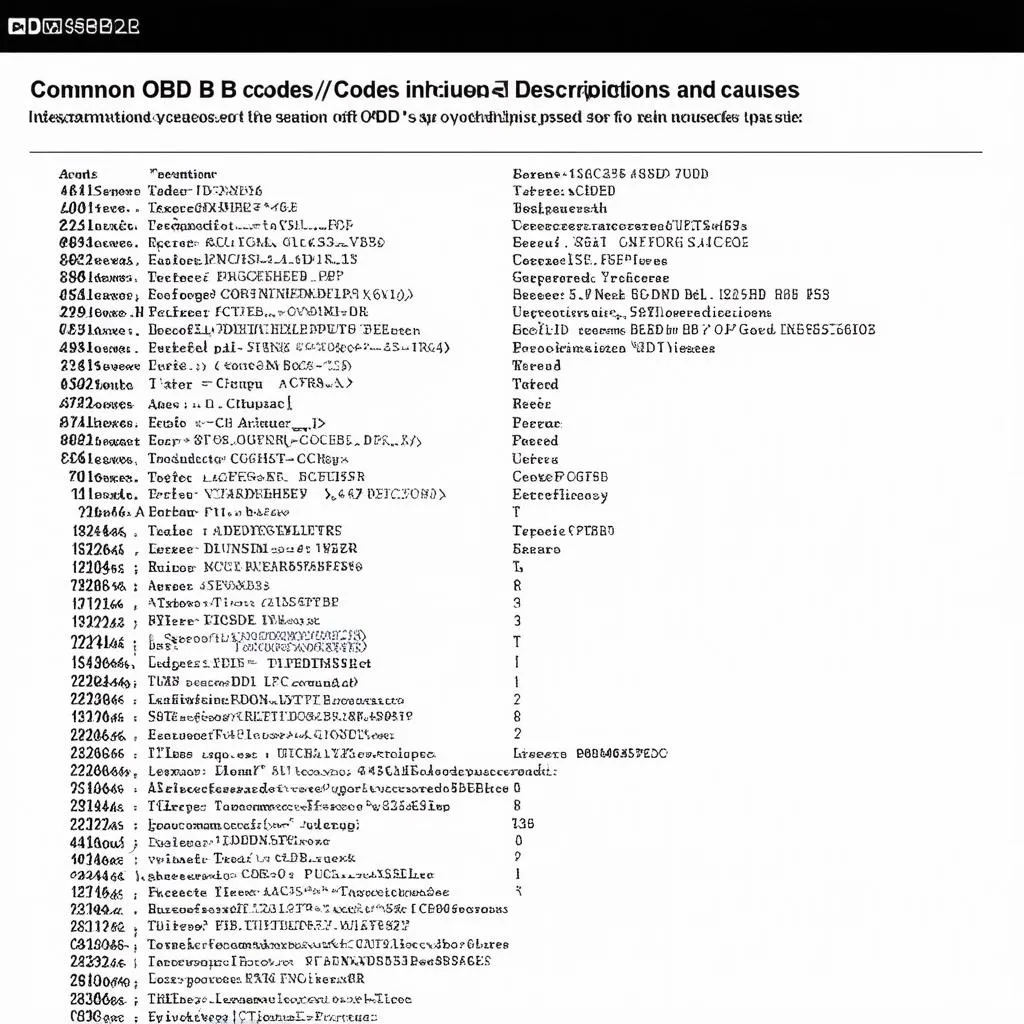Ever felt like you were speaking a different language when your car’s check engine light flickered on? You’re not alone. Those cryptic letters and numbers, known as OBD codes, can seem like a foreign language, but they’re actually your car’s way of telling you what’s going on under the hood. They’re a treasure trove of information that can help you diagnose problems and get your car back on the road.
The Significance of Understanding OBD Codes
Understanding OBD codes is crucial for any car owner, whether you’re a seasoned mechanic or just starting to learn about your car’s inner workings. These codes can tell you:
- What’s wrong with your car: OBD codes pinpoint the specific component or system that’s malfunctioning.
- The severity of the issue: Some codes indicate minor issues that can be easily fixed, while others point to more serious problems that require professional attention.
- Potential savings: By understanding your car’s issues early on, you can often avoid expensive repairs or breakdowns.
Think of it like a doctor’s diagnosis for your car. Just like a doctor uses symptoms to diagnose your illness, OBD codes provide a roadmap to identify and address any health concerns your car might have.
Decoding the Mystery of OBD Codes
OBD codes are a standardized system used by car manufacturers worldwide. Each code consists of a combination of letters and numbers, with each one corresponding to a specific issue.
For example:
- P0171: This code indicates a fuel trim system problem, suggesting that your engine is running too rich or too lean.
- C1222: This code might signal a problem with your ABS system.
Understanding the Different Types of OBD Codes
There are three main types of OBD codes:
1. Powertrain Codes (P codes): These codes are related to your car’s engine and transmission. They’re the most common type of OBD code.
2. Chassis Codes (C codes): These codes deal with your car’s chassis, including the braking system, steering system, and suspension.
3. Body Codes (B codes): These codes relate to your car’s body and comfort features, such as the air conditioning, power windows, and lighting.
How to Read OBD Codes
Reading OBD codes might seem daunting at first, but it’s actually quite simple. Most modern vehicles are equipped with an OBD-II port, typically located under the dashboard. You can use a diagnostic scanner to read and interpret these codes.
You can also use a smartphone app to read OBD codes. Just make sure the app is compatible with your car’s model.
Navigating a Sea of OBD Codes: A Comprehensive List
Here’s a complete list of common OBD codes, categorized by type:
Powertrain Codes (P codes)
 OBD P codes List
OBD P codes List
Chassis Codes (C codes)
 OBD C codes List
OBD C codes List
Body Codes (B codes)
 OBD B codes List
OBD B codes List
Frequently Asked Questions about OBD Codes
Q: What should I do if I see a check engine light?
A: If you see a check engine light, the best thing to do is to scan your car for OBD codes. This will give you a clearer idea of what’s going on. If you’re not comfortable doing this yourself, you can always take your car to a mechanic for a diagnosis.
Q: Can I clear OBD codes myself?
A: Yes, you can clear OBD codes yourself using a diagnostic scanner. However, clearing a code doesn’t mean the problem is fixed. It only erases the error message. If the underlying issue persists, the check engine light will likely come back on.
Q: Can OBD codes tell me how much a repair will cost?
A: OBD codes can provide valuable insights into your car’s issues, but they don’t necessarily tell you how much a repair will cost. The cost of repairs can vary widely depending on the specific problem, the car model, and the labor rates in your area.
Understanding Your Car’s Language: A Key to a Long and Happy Relationship
OBD codes are a powerful tool for understanding your car’s health. By learning to read and interpret these codes, you can gain valuable insights into your vehicle’s performance and take proactive steps to maintain it.
If you need help with your car’s diagnostics or have any questions about OBD codes, don’t hesitate to contact our team of experts. We’re here to help!
Contact us on Whatsapp: +84767531508 for professional assistance and expert advice.
For more information on specific car models and OBD code interpretations, check out our other resources on techcarusa.com.
- GM OBD-II Codes List
- Honda OBD Codes List
- P1000 OBD Code Ford
- 172 OBD Code
- 2000 Honda CRV OBD Connector Location
Remember, understanding your car’s language is the key to a long and happy relationship.
Share your thoughts and experiences with OBD codes in the comments below!